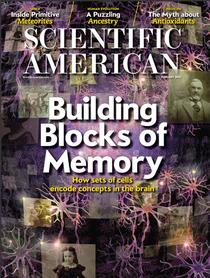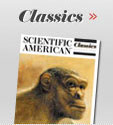 View a slide show of chondrite meteorites
Image: Alan E. Rubin
View a slide show of chondrite meteorites
Image: Alan E. Rubin
More In This Article
Meteorite researcher Alan E. Rubin of the University of California, Los Angeles, recently examined 91 thin sections of 53 chondrites (fragments of ancient asteroids) to learn something about the environment that surrounded the chondrites when they first formed—before they became constituents of asteroids and before planets made their debut in the solar system. He recounts his efforts, and what he learned, in his article “Secrets of Primitive Meteorites,” in the February 2013 issue of Scientific American.
One of Rubin’s goals was gaining clues to the distribution of dust in the swirling, gaseous nebula that spawned the solar system. Dust, after all, is the stuff that was later compacted—and sometimes melted or combined with ice and other materials in the nebula—to form chondrites, asteroids and, ultimately, planets. The distribution of dust influenced where and how fast planetary embryos in the solar system took shape.
Various features in chondrites offer clues to how much dust was present in their particular corners of space. Notably, large chondrules (melted granules of silicate-rich material) signify more surrounding dust than small ones do.
It is hard for casual observers to read the universe’s history in the thin sections that Rubin studied, but it is easy to appreciate their beauty. The micrographs in the slide show here offer a taste of what he saw as he did his analyses. Some macroscopic chondrites are also included for context, although the slices did not come from the specific rocks depicted. In the slices most of the colored bits are either full or fragmented chondrules or they are grains of olivine or pyroxene that were released from chondrules that broke open.
No two chondrules are alike, Rubin says; in that sense, “they are like snowflakes.”
View a slide show of chondrite meteorites
Already a Digital subscriber? Sign-in Now
If your institution has site license access, enter here.
















 See what we're tweeting about
See what we're tweeting about






Comments
Add Comment